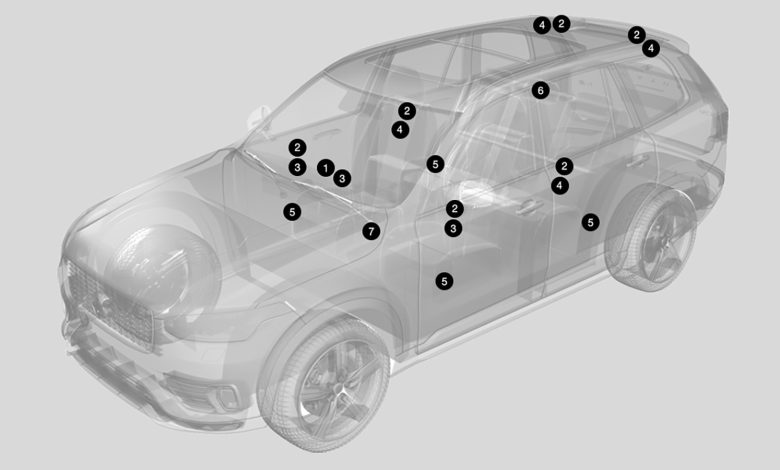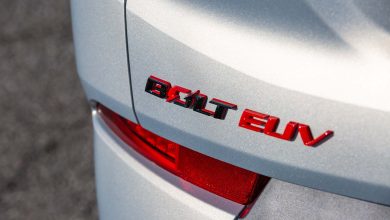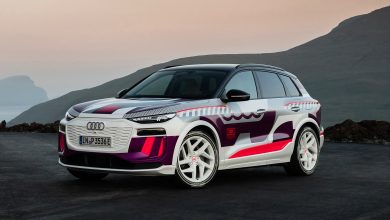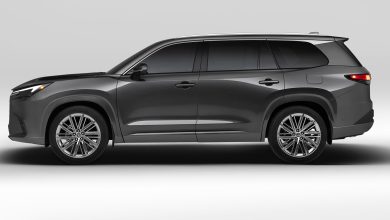Your Car’s Interior May Already Be a Superspeaker. Here’s How It Works

We’ve established the software defined vehicle, but now are you ready for the software-erased interior? Swedish audio experts at Dirac say that’s step one to presenting a reference-studio level soundstage experience to riders listening in a hostile automotive interior. In the case of a recording studio, there’s sound-absorbing walls, and a high-end home audio setup typically places all speakers with nothing standing between them and the listener, so sound arrives in unison. But in a car, sound waves may have to travel from the lower doors, front kick-panels, or the trunk, bouncing off plastic, carpet, leather, fabric, glass, and more before reaching a listener’s ear. Sound from one speaker can also interfere with that of another—a problem that can be made worse by increasing the number of in-car speakers. Dirac’s audio magic is all ones and zeros—digital signal processing software that helps virtually align and equalize these sound paths—and it’s designed to work with anyone’s speakers. Here’s how it works.
Dirac Magic
Dirac Research AB was founded in 2001 to commercialize intellectual property coming out of Uppsalla University in Sweden. Researchers there determined that any speakers in any space could be made to sound better if the signals driving those speakers were conditioned to work collaboratively with one another, and that, when tailored to the specifics of the space, those collaborative signals could even make the sound seem as though it was arriving at listeners’ ears as if from unobstructed speakers in a studio. Dirac now calls this magic the Intelligent Audio Platform.
Step One: Listening
The beauty of the Dirac system is that it’s largely algorithm based, and the principal input for the algorithms is derived via machine listening. Reference sounds are played from the production speakers, mounted in a final production-intent interior and recorded by a complex array of sensitive microphones. A lot of them. Each seating position gets 16 microphones per speaker channel. So, to program for four seating positions in a car with 20 speakers takes 1,280 microphones. Measuring six seating positions in a high-end three-row SUV with 30 speakers would require 2,880 mics.
Impulse Response
The algorithms are measuring responses returning from speakers generating a known impulse. This patented multiple-input/multiple-output (MIMO) mixed phase impulse response correction technology involves generating input impulses of sound energy, and listening for the way each impulse gets recorded by all these microphones. This data gives the Dirac algorithms a complete picture of what all the various absorptive and reflective surfaces are doing to each signal along its way to the listener’s ears, and how one speaker’s output might be counteracting or reinforcing that of another.
Sound Field Control
This information is then used to rearrange the speaker to eliminate the many peaks and dips that that occur when notes meant to harmonize arrive at your ears slightly too early or late, the Dirac algorithm builds in a mixed phase response correction that effectively groups certain speakers together so that they operate like a super speaker. This “sound field control” involves manipulating a highly complex multidimensional matrix of interdependencies that would be impossible to compute manually. The resulting sound-field optimization allows listeners to perceive bass as coming from in front of them, even if the subwoofer is in the trunk.
On-Demand Effects
Once the interior has been “erased,” the system is effectively replicating an empty studio space. It’s then a simple matter of reprogramming the algorithm to replicate the reflective nature of different environments—jazz club, stadium, concert hall, etc., which can be mapped similarly by Dirac’s microphones. Effects like these could be made available for after sale downloading or subscription, as could, for example, seasonal programming to account for the different reflectivity of waterproof WeatherTech floor mats relative to carpeted ones.
Dirac & Volvo, Polestar, et.al.
The Volvo XC90 with the Bowers & Wilkins sound system was first to market using Dirac programming (perhaps helping propel it to our SUV of the Year crown in 2016), and now every Harman Kardon and Bowers & Wilkins sound system in a Volvo includes Dirac programming, as will the forthcoming Polestar 3. Polestar is branding the system Dirac Opteo Professional, built on a Bowers & Wilkins system with 25 speakers, some of which incorporate Tweeter-on-Top and Continuum Cone technology. (Note that Dirac is happy to tune any type of speaker, with cones made from paper or aramid fibers to those with transducers vibrating interior trim panels, and it’ll program for any number of speakers but has observed diminishing returns for anything greater than 30-32 speakers).
Exclusive-use rights have expired and Dirac now has open programs with 18 OEMs and a number of suppliers, with systems in production on over 70 models. Dirac has also collaborated with Dolby in optimizing its proprietary 12-channel Atmos system, both in a demo car and in an OE fitment with NIO in China, though not in its premiere application on the Lucid Air.
Read the full article here








